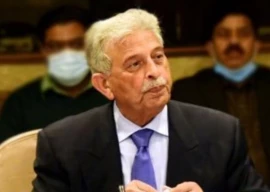
Finance and energy managers are seeking to increase infrastructure development cess on natural gas and petroleum levy on oil products in the upcoming budget to generate funds for the Iran-Pakistan (IP) gas pipeline project and bridge the fiscal deficit.
Under the proposed mechanism, the government may consider removing cap on the cess and petroleum levy in a bid to enhance their rates to raise more funds, whenever needed. “However, no such plan has yet been finalised,” a government official said.
The proposal comes in the face of constraints being faced in getting international assistance, even from China and Russia, for the IP gas pipeline due to sanctions imposed by the United States on Iran.
To avoid any difficulties in future, the petroleum ministry is seeking to revise the rate of cess, whenever it desired.
Petroleum development levy (now petroleum levy) was meant to finance oil projects to achieve self-reliance, but this tax was used for other purposes.
The Supreme Court too had taken notice of the use of petroleum development levy, prompting the government to rename it as petroleum levy and fix ceilings.
For high octane blending component (HOBC), the rate is Rs14 per litre, for petrol it is Rs10 per litre, for high-speed diesel Rs8 per litre, for kerosene oil Rs6 per litre and for light diesel oil Rs3 per litre. These rates are approved by parliament and the government cannot collect more.
“Now the government wants to revert to the earlier mechanism when there was no cap on the petroleum levy,” a senior government official said.
At present, the government is mostly charging less than the levy fixed for petroleum products. It is collecting Rs8.86 per litre on petrol, Rs11.84 per litre on HOBC, Rs5.15 per litre on kerosene oil, Rs3 per litre on light diesel oil and Rs4.20 per litre on high-speed diesel.
Under the Gas Infrastructure Development Cess Bill 2011, the rate is also fixed, which the government wants to revise to bag funds for the IP pipeline. The Interstate Gas Systems (ISGS) has already floated tenders for construction of the pipeline, but so far there has been no firm commitment from international financiers.
The cess rate is Rs197 per million British thermal units (mmbtu) for feedstock gas for fertiliser plants, Rs13 per mmbtu for the industry including captive power, Rs27 per mmbtu for power companies and Rs70 per mmbtu for independent power plants (IPPs).
For the CNG industry, the cess rate is Rs141 per mmbtu for consumers falling in Region-I and Rs79 per mmbtu for consumers residing in Region-II. However, the government is charging less from CNG outlets.
The cess will also be spent on other important projects like Turkmenistan-Afghanistan-Pakistan-India (TAPI) gas pipeline, liquefied natural gas (LNG) import, increasing liquefied petroleum gas (LPG) supply and other alternative fuels.
Published in The Express Tribune, May 10th, 2012.
COMMENTS (3)
Comments are moderated and generally will be posted if they are on-topic and not abusive.
For more information, please see our Comments FAQ

































1714024018-0/ModiLara-(1)1714024018-0-270x192.webp)









@hamid lol karzai.... im already paying more than my fair share... if i pay more the factory might remain open and i may have a job, but i can only work if i can feed myself with the money i earn, this way all i'll be feeding is the taxes and the levies and what-have-you.
Dear Fahad, the cess adds burden, but so what? I am willing to pay little more bill and have my job at the factory then pay no bill and let the factory be closed due to lack of electricity.
Keep blaming the govt, but remember, alot of electricity and energy is 'stolen' by the people.
I guess government believes that by making false statements they will make fool out of us? We are not living in, so called, la la land. This is reality and being pragmatic we know that we can not face the american pressure. What if it resulted in sanctions what are we going to do after that? China and Russia have already backed out of this project so why are we poking our nose into this realising the risk we are taking. This cess, which soon, will be implemented would only further add burden to the shoulders of a common individual. And the raised funds will be used in another projects; which Gods knows better.